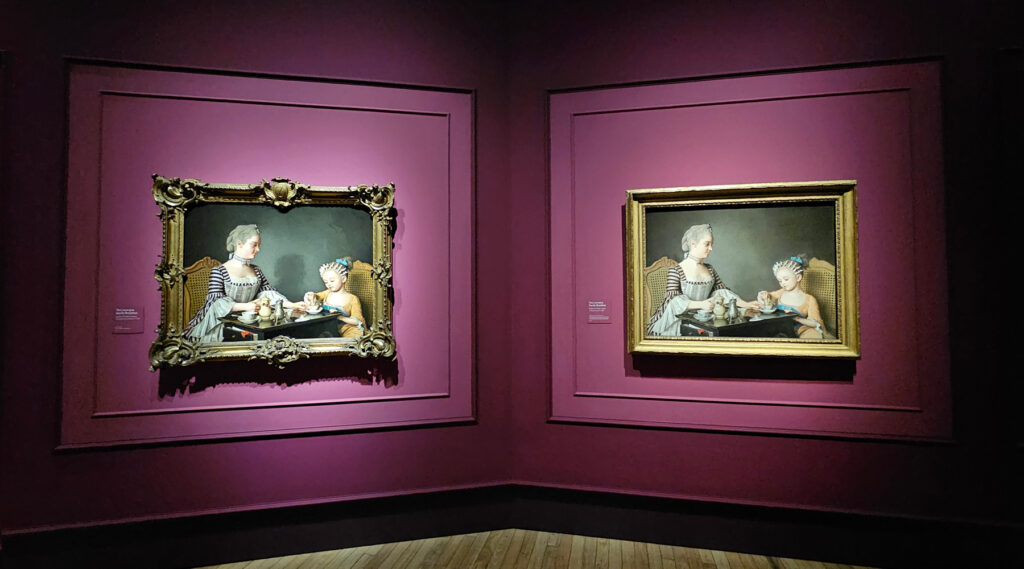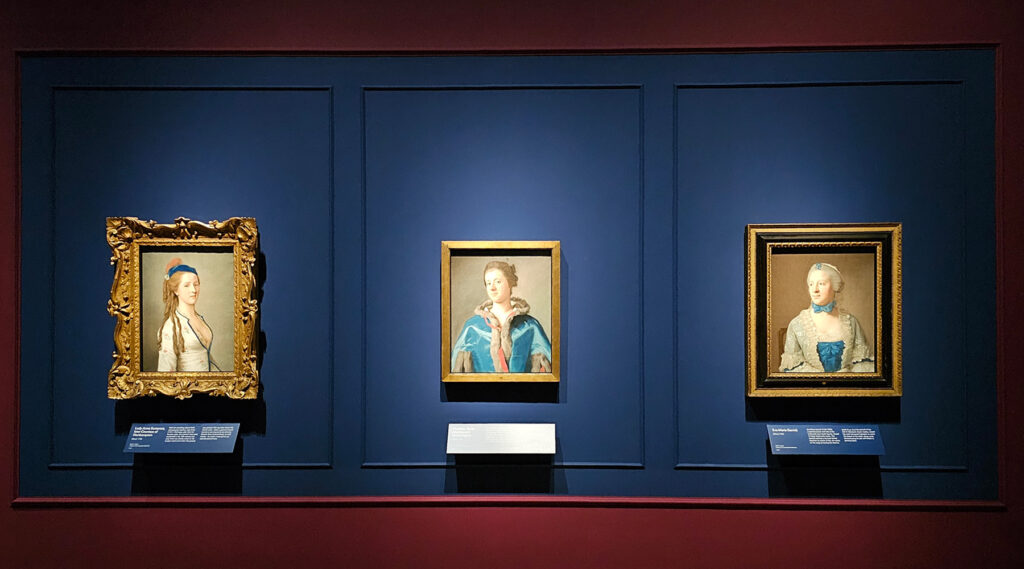In 1754, an artist painted a family breakfast scene in pastels. Nearly two decades later, he painted it again in oils, but the two paintings have never been in the same room – until now. The artist was Jean-Etienne Liotard, and the paintings are the Lavergne Family Breakfast, a seemingly ordinary domestic scene which the artist felt compelled to return to again nearly 20 years later.
Jean-Etienne Liotard was an interesting artist, who met one of his richer friends, William Ponsonby, who was heading to Constantinople, joined him and stayed for several years, adopting Ottoman clothing — and a very big beard.
When he left modern day Turkey, he spent the next 35 years travelling around the cities of Europe, and kept his Ottoman inspired appearance, which instantly marked him out as different in the social circles of the time, and along with a genuine skill as an artist, made him highly desirable as a portrait painter.
However, what he, and art historians, consider his masterpiece is the seemingly ordinary domestic scene, of a mother and child eating breakfast. Of course, it is not an ordinary family, as can be seen in the expensive clothing and carefully presented hair, with the child being taught how to behave correctly at the table.
Painted in pastels in 1754, and sold to William Ponsonby for the staggering sum of 200 guineas, he returned to the painting in 1773 and made an updated replica in oils, and as far as the National Gallery knows, other than when the artist and owner saw them, they’ve never been seen side by side since.
It’s also a fairly rare chance to see the pastel original, as it was never shown in public after it was first painted and was only acquired by the National Gallery in 2019, following the death of its latest owner, the merchant banker George Pinto.
The pastel original was painted in Lyon, France, and isn’t a portrait of a family but a composition he created — it’s quite possible that the young girl isn’t even related to the older lady — although later research suggests they might have been his distant relatives, and he is known to have painted his French relatives several times. The painting was made speculatively, without a confirmed buyer, but domestic scenes of people taking tea were increasingly popular topics, so he probably expected a quick sale.
Painted over six sheets of paper, it’s one of his largest works, and considering it was done in pastel, it is a remarkable survivor of its trip to London, where he did indeed quickly sell it.
While artists often made duplicates of their paintings, it’s rare that they return to one nearly two decades later, and it’s possible that he turned to a proven and lucrative composition to recreate in expectations of another quick sale. Times had changed though, so it’s in oil rather than pastels, and rather more subtly, although a mirror copy, he tweaks it in places. The humans haven’t aged, but the porcelain has, with the blues turning brown as they often did at the time.
Unfortunately for the artist, the style wasn’t fashionable anymore, and it struggled to sell it. By a quirk, the oil painting eventually ended up in the Rothchild collection, and an in-law relative independently bought the pastel, so they came close, but never quite touched.
Until now – as the National Gallery has put the two paintings side-by-side for the first time so you can see the similarities and differences and compare the bright oils with the more muted pastels, and decide which you prefer.
It’s the headline in a single-room exhibition which has also included a number of Liotard’s other paintings, particularly a number of self-portraits of the artist, who was rather keen on them, having made over 20 during his lifetime.
Although famous for his beard and Ottoman attire, there is one self-portrait engraving of him beardless, and it’s almost as shocking as seeing a picture of Charles Dickens without a beard — although he arguably looks a lot younger as an older clean shaven man than he did as a younger beardy.
Several portraits of aristocrats who could afford him have been collected, but also a number of still lives, particularly of porcelain cups and saucers, which were such an expensive thing to own in the time before mass production rendered them commonplace.
As an exhibition, its a good introduction to an artist who was famous in his lifetime, but somewhat less so today, and quite likely, the only time most of us will ever see the two versions of the in the same room again.
The exhibition, Discover Liotard and the Lavergne Family Breakfast is at the National Gallery until 3rd March 2024 and is free to visit.
You don’t need tickets, but they recommend booking a free visitor ticket to speed up entry when the gallery is busy.
Exhibition Rating
National Gallery
Trafalgar Square, London
WC2N 5DN










I echo the reader who thanked Ian for the Exhibition list. I would also like to add my appreciation of this thoughtful comment on the Liotard show at the NG. The five stars are fully deserved. The general lack of comment excited by Ian’s perceptive coverage of cultural events, as opposed to the comment on transport, is very noticeable. This is a small attempt to re-balance. And finally, what an outstanding job the NG does, supplementing the permanent collection with superb special exhibitions – like the huge Hals and the bijou Liotard covered in this bulletin. Readers awake!
There was a beautiful Liotard exhibition about five years ago at the Royal Academy. It was noted there that the last person to hang a Liotard picture at the RA before that was Liotard himself, 250 years earlier. I imagine it’s because most of his work was in pastels, and they – like watercolours, engravings and anything but oil – are somehow regarded as Not Real Art.